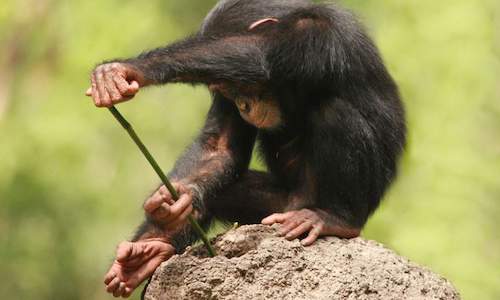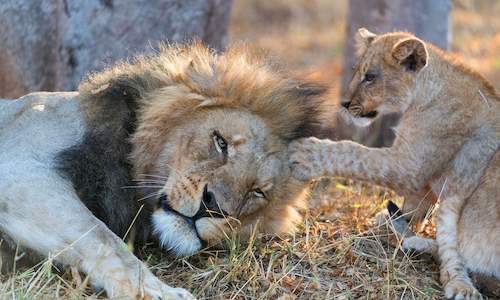
By Leigh Kemp
Feeding
With wild lands shrinking national parks were forced to 'manage' the resources and one method was to sink boreholes to provide permanent water in the park. This, in many, places had a detrimental effect on the vegetation and the numbers of some species that relied heavily on the vegetation.Grazers and Browsers
Herbivores - grazers, browsers and intermediate feeders - generally have a strict diet preference but will feed on other plants when times are severe. Grazers will feed on leaves and fruit in times of severe drought and browsers will graze when necessary. Intermediate feeders will utilize the most available food source at the time.
Herbivores moving together on the great savannas of Africa have a relationship where they do not compete for food. Zebra are able to utilize the hard parts of plants and they will eat the old grass down leaving the new shoots for the Wildebeest to graze on.

Carnivores
Carnivores have a wide range of diet. Lions for example have been observed feeding on anything from Termites to Elephants. It was previously thought that Lions did not hunt adult Elephant until a pride in Savuti Botswana began to specialize in killing Elephant.
Not far from this pride another pride in Linyanti Botswana specializes in killing Hippo. Lions are also now known to scavenge much of their food and in some places are greater scavengers than Hyenas.

Meat-Eating Herbivores
Giraffe have been known to gnaw on bones they find in the bush. This behaviour is ascribed to a calcium deficiency in the animals' diet. The question that has to be asked here is how the Giraffe learnt that bones have calcium thereby leading to the behaviour.Warthog were thought to be omnivorous as they had been observed feeding on fresh carcasses. It is a known fact that they will eat meat under extreme circumstances but it is very uncommon.
When they have been observed at a carcass they are usually eating the stomach contents of the animal as the vegetable matter is partly digested and still fresh. I have observed warthogs eating the feathers of a dove that were lying on the ground. I was too late to observe what had killed or eaten the dove initially.
Hippos are statistically the greatest killers of humans in Africa but they do so not to eat, but to protect themselves. Most human casualties occur when Hippo feel threatened - either in their territories or when someone comes between them and water.Food Storage
Animals use a number of methods to store food. This storage however is not usually for extended periods as in some species of the colder realms that have a season's store. Leopards will often pull their kills into the upper branches of trees to keep the meat out of reach of other predators such as Lions and hyenas.
They do this to protect their kills and not necessarily as storage, although they do feed off the carcass for up to three days. Baboons are known to stuff food in their cheeks when feeding as a temporary storage facility. This usually happens when they are feeding on fruits and needing to utilize the particular resource as much as possible.


 Although once presumed to be only the preserve of a human, animals are now known to use assistance in the form of physical objects such as t...
Although once presumed to be only the preserve of a human, animals are now known to use assistance in the form of physical objects such as t... Discover incredible insights into Botswana's wildlife behaviour, from predator-prey dynamics to migration habits. Explore how animal behavio...
Discover incredible insights into Botswana's wildlife behaviour, from predator-prey dynamics to migration habits. Explore how animal behavio...